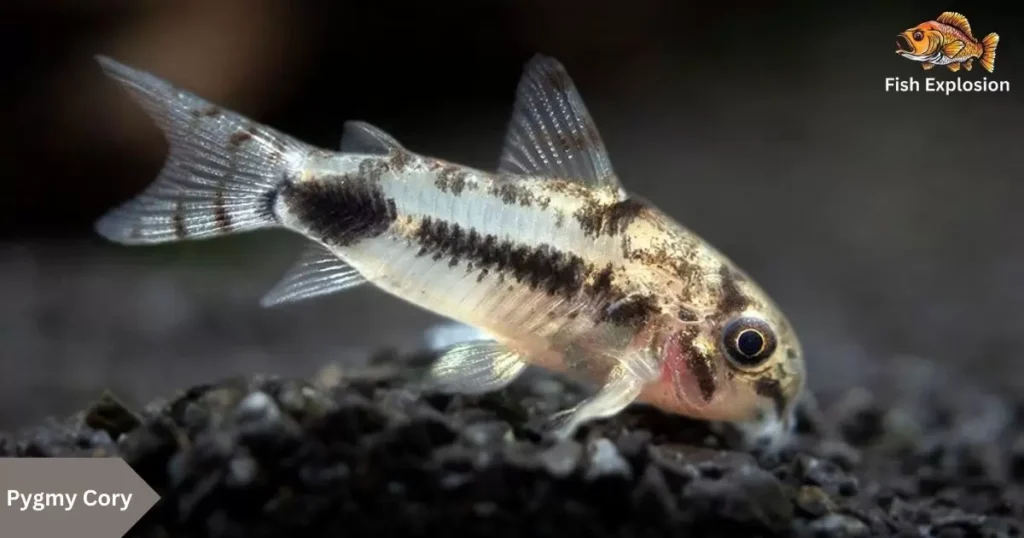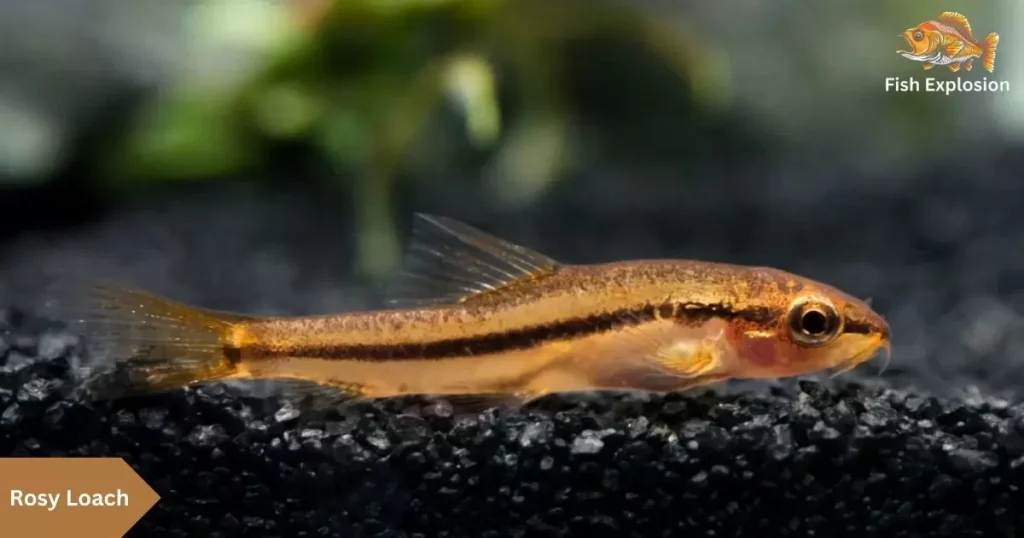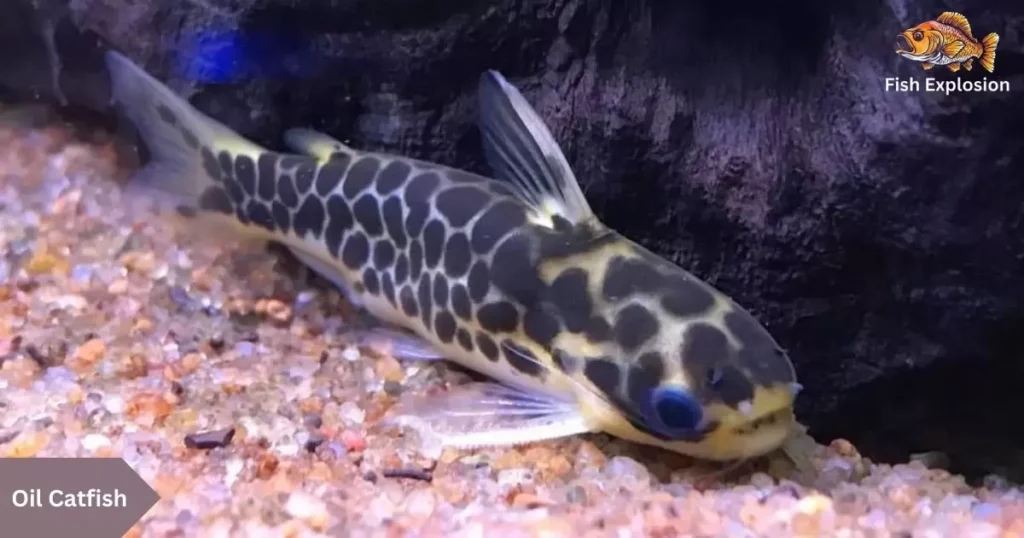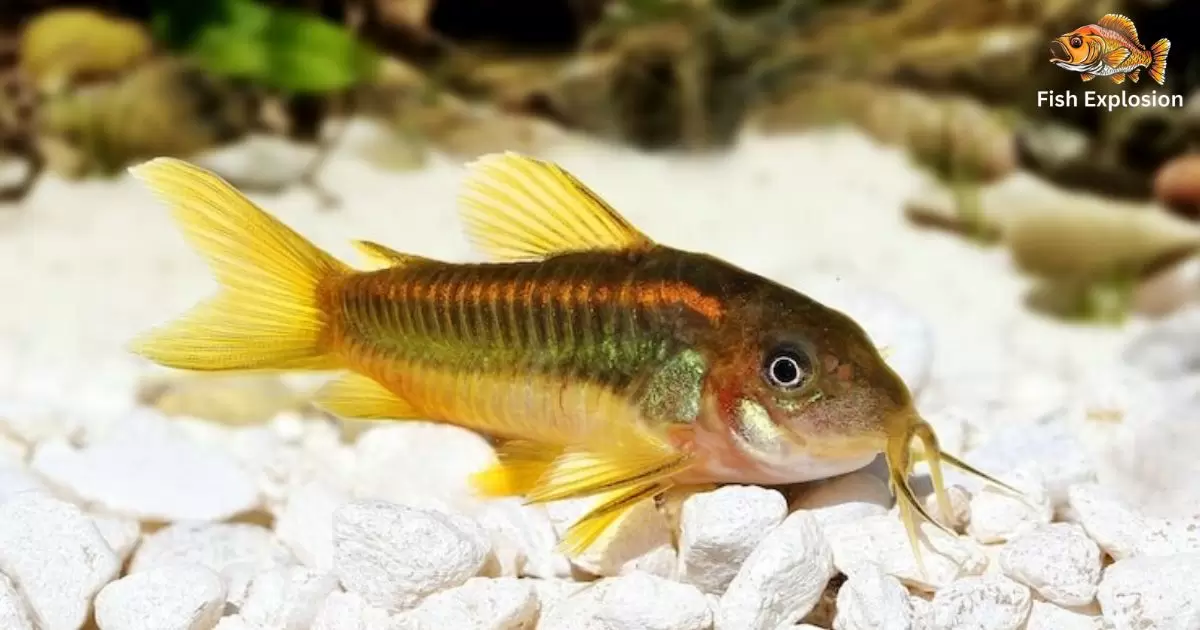Adding bottom feeder fish to a small home aquarium can be an excellent way to help keep the tank clean and healthy. These industrious little scavengers spend their time foraging along the substrate, consuming leftover foods, algae, and detritus that other fish may miss. By cleaning up waste and uneaten matter, bottom feeders play an important role in maintaining good water quality and preventing unsightly buildup in the aquarium. Despite their small size, many of these fish also make interesting additions with unique behaviors and appearances. For aquarium hobbyists with space-constrained nano tanks or those just looking to add some low-maintenance clean-up crew members, the following 7 bottom feeders are well-suited for small aquarium environments.
Our Favorites
Of all the bottom-feeding fish suited for small aquariums, a few stand out as particular staff favorites here. The humble but hard-working Corydoras catfish make an excellent choice, with their peaceful demeanor, cute barbels, and entertainingacacara behavior of sifting through the substrate. The kuhli loach is another beloved option – these long, eel-like swimmers do a phenomenal job of sourcing out debris from even the tightest corners and crevices.
Read More: “10 Small Algae Eaters For Freshwater Aquariums”
For nano tanks, the perfect-sized Otocinclus dwarf suckers are unsurpassed for controlling algae growth on plants, decorations, and glass surfaces. Though sometimes shy hiders, when acclimated these vegetarians make for charming little tankmates. Whichever species ends up being your favorite, you can’t go wrong adding some of these unsung heroes to your clean-up crew.
Pygmy Cory

The diminutive pygmy cory (Corydoras pygmaeus) proves that good things come in small packages. Maxing out around 1 inch long, these tiny catfish are perfectly sized for nano tanks. They actively root around the bottom consuming leftover foods and waste. Their peaceful schooling nature allows keeping groups of 6 or more.
The pygmy’s chipmunk-like faces and interesting striped pattern make them fun to watch. Though small, provide enough space and hiding spots as they can be reclusive. With proper environment and school numbers, their personalities shine.
Eques Cory
For larger small aquariums around 10 gallons, consider the eques cory (Corydoras eques). Though not as miniature as pygmies, their manageable 2-inch length suits them well to modestly-sized tanks.
These ravenous scavengers are excellent at leaving no bit of debris behind. The striking emerald green coloration with black markings makes them eye-catching residents. Eques rays require softer water conditions and do best in schools of 5 or more. Their peaceful temperament and constant foraging provide whimsical activity.
Otocinclus vestitus
- Otocinclus vestitus, commonly known as the dwarf suckermouth catfish or oto cat, is a small freshwater fish native to Brazil and Venezuela.
- They only grow to a 1.5-2 inches, making them perfect for nanoaquariums.
- Otocinclus are excellent algae eaters that will consume green hair algae, green spot algae, and diatom algae.
- They have a round, flat body shape with a suckering ventral mouth used to cling to surfaces while grazing.
- Otocinclus do best when kept in small schools of 4-6 individuals.
- They are peaceful community fish that can be kept with other small, non-aggressive species.
- Otocinclus requires mature, well-established aquariums with plenty of algae and biofilm to graze on.
- Water conditions should be soft, acidic (pH 6.0-7.5), and around 72-82°F.
- They can be shy and may initially look for hiding spots, but will become more bold over time.
- Otocinclus makes an excellent addition to planted tanks to help control nuisance algae growth.
Rosy Loach

The vibrant rosy loach (Desmopuntius rhomboidalis) brings a splash of color to the bottom level. These 3-inch relatives of clown loaches boast pinkish-orange bodies with thick vertical bars. Rosy loaches are extremely active and animated, constantly wriggling and rooting through the substrate.
Their small size suits nano tanks, but provide ample surface area as they do best in groups of 5 or more. Despite their lively nature, rosy loaches make peaceful community members when their schooling needs are met. Their eager appetites make them excellent scavengers.
Blue Neon Goby
For brackish water nano tanks, consider the brilliant blue neon goby (Gobioides puntangoides). These 2-inch gobies shine with a vibrant neon blue coloration that really pops against dark substrates. Blue neons are fascinating sandsifters, using their protruding mouths to comb through particles.
Provide plenty of open sandy areas for their natural behaviors. Though small, they have big personalities – active, unafraid, and comical. When acclimated properly to brackish conditions, blue neon gobies can thrive in appropriate tiny aquascapes. Monitor hardness levels carefully.
Bumblebee Oto
Striking Appearance
The bumblebee oto (Otocinclus borelli) gets its name from the bold black and yellow striped patterning covering its body.
This eye-catching coloration makes these small catfish really stand out in an aquarium.
Efficient Algae Control
Like other otocinclus species, bumblebee otos are excellent algae eaters that will readily consume hair algae, green spots, and diatoms.
Their tiny size allows them to graze in hard-to-reach crevices for a thorough cleaning.
Specialized Care Requirements
Housing bumblebee otos requires a very mature, well-established aquarium with ample algae growth and biofilm to sustain them. They also need excellent water quality, stable water parameters, and a varied diet of supplements like blanched veggies.
Oil Catfish

The oil catfish is a popular freshwater fish found in rivers and lakes across Southeast Asia and parts of Africa. It can grow up to 3 feet in length and weigh over 30 pounds. Oil catfish have whisker-like barbels around their mouths, which they use to detect food in muddy waters.
They are an important food source for locals and are also popular among Asian fish farmers. Their meat is lean and flaky, with a mild flavor enjoyed in many Southeast Asian dishes.
Where to Purchase
Oil catfish can often be found live at Asian markets that sell fresh seafood and produce. Look for large tanks filled with catfish of varying sizes. Ask the fishmonger to select one within your desired weight and price range.
For cooked or filleted portions, check the freezer section for vacuum-sealed bags of oil catfish meat. Large supermarkets carrying Asian ingredients may also stock frozen bundles. For the best quality and freshness, opt to purchase whole live catfish from a trusted Asian market.
FAQ’s
What fish takes the smallest tank?
The pygmy cory or dwarf puffer are good options for very small nano tanks under 5 gallons.
What is the smallest bottom feeding fish?
The pygmy cory (Corydoras pygmaeus) is one of the smallest bottom feeding fish, only reaching around 1 inch in length.
Do bottom feeders eat small fish?
No, bottom feeding fish like cories, otos, and loaches only consume leftover foods, algae, and detritus – they will not eat other small fish.
Which fish is best for a small tank?
Some of the best fish for small tanks under 10 gallons include guppies, endlers, chili rasboras, pygmy cories, and dwarf shrimp.
Conclusion
Bottom feeder fish can be excellent choices for small aquarium tanks as they help to clean up debris and leftover food without being aggressive towards other tank mates. The seven fish highlighted – corydoras catfish, Khuli loaches, Otocinclus catfish, Kribensis cichlids, Bristlenose pleco, Pygmy cories, and Khuli loaches – all stay relatively small as adults and occupy the bottom level of the tank.
They provide natural clean-up duties without being territorial or nippy. Adding a school of several bottom dwellers adds interesting color, movement, and dynamics to a nano tank ecosystem. Property matched with small, peaceful community fish, inverts or betta, bottom feeders are perfect for enhancing biodiversity and maintenance in miniature freshwater environments. Their scavenging nature keeps the glass clear and gravel vacuuming to a minimum.
With three years of dedicated expertise in the niche of fish, my domain knowledge encompasses breeding, habitat maintenance, health management, and sustainable aquaculture practices, ensuring optimal outcomes in the aquatic realm.











